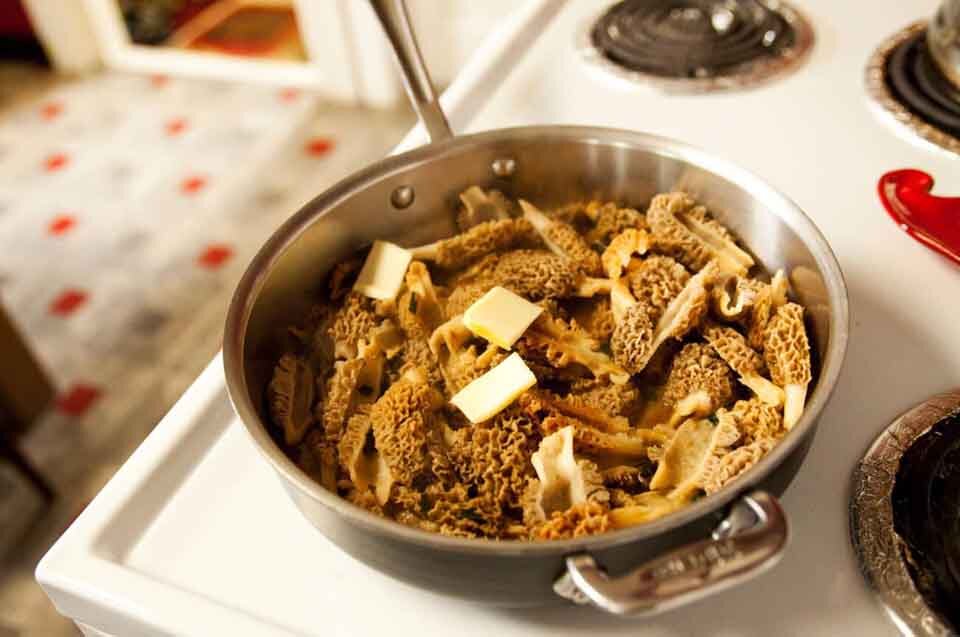Morel Mushrooms: FDA Issues Pioneering Guidelines On Potentially Poisonous Mushrooms

The FDA completed an investigation into morel mushrooms earlier this year following an outbreak of food poisoning in Montana in March and April. Traced to Dave’s Sushi in Bozeman, two people died while 51 fell ill, and the probable cause was found to be undercooked or raw imported morel mushrooms, triggering the investigation. Before the investigation, the FDA’s Food Code guidance to states was limited to wild mushrooms which had to be approved by a regulatory authority.
An expensive delicacy, the tragedy highlighted how little is known about the risks of the morel mushroom- or the correct preparation methods. Spokesperson for Montana’s health department, Jon Ebelt confirmed that information is limited and confirmed that the morels tested from Dave’s Sushi produced no indication of any specific toxin, pathogen, pesticide, or volatile or nonvolatile organic compound in the mushrooms but the FDA’s investigation resulted in the issue of specific guidelines.
Imported to various states including Oregon, the risks inherent in the morel are not unique. Revealing that the more than 5,000 fleshy mushroom species grown naturally in North America have not been tested for toxicity, the FDA’s Food Code identifies 15 deadly species, 60 of which are toxic- whether raw or cooked (including “false” morels, which look like spongy edible morels), and at least 40 are poisonous when eaten raw, but are safer when cooked.
The toxins in morel mushrooms that could result in food poisoning are not yet fully understood by the FDA, but by using their proper preparation procedures, such as for preparation and cooking, toxin levels can be reduced. But even with guidelines followed, there are no guarantees.
Mushroom experts from the North American Mycological Association, a national nonprofit, recorded 17 deaths and 1,641 cases of mushroom poisonings between 1985 and 2006. While no deaths were recorded in this period from morels, 129 of the poisoning cases were linked to this mushroom. Outreach chairperson for the Puget Sound Mycological Society, based in Seattle- Marian Maxwell explained that the cooking process breaks down the chitin (the same compound found in the exoskeletons of shellfish) in mushrooms, and aids in destroying toxins.
Containing a type of hydrazine- a chemical often used in pesticides or rocket fuel, that can cause cancer- different people have differing reactions. Boiling out the hydrazine is also not failsafe as there are people who will still have reactions, even with most of the hydrazine gone. Shown to exist in false morels, hydrazine is less evident in true morels, such as those at Dave’s Sushi.
Indicating that morels are a premium product, Aaron Parker- owner of Dave’s Sushi, indicated that morels can cost $40 per pound in season- during spring and fall, but morels purchased out of season can reach $80 per pound. Certain respected recipe books set out how to sautee morels to help preserve the sought-after earthy flavor, but at Dave’s, the morels had a marinade- sometimes boiling, poured over before being served. Parker found that- after his own probe, he believes that boiling the mushrooms for 10 to 30 minutes is the safest way to prepare them. Other chefs that he reached out to nationally were also unaware of the toxicity of the morels.
Although rare in restaurants- the Montana Morel food poisoning outbreak is thought to be the first in the US, other incidents have been recorded globally. Emanating from a Michelin-star-rated restaurant in Spain in 2019, morel food poisoning outbreak caused around 30 customers to fall ill. Although one woman who consumed morels died, her death was determined to be from natural causes. In the same year, Vancouver, British Columbia reported that morel mushrooms served on a pasta salad poisoned 77 people, but all survived.
Banning the sale of wild-picked mushrooms in a restaurant or other food establishment unless it’s been certified to do so, the FDA confirmed that cultivated wild mushrooms can be sold if the operations are overseen by a designated regulatory agency. Dave’s Sushi’s morels had been certified and Montana as well as at least six other states allow restaurants to sell wild mushrooms sourced from licensed sellers. If identified by a state-credentialed expert, 17 other states allow the sale of wild mushrooms.
A 2021 study by the Georgia Department of Public Health referenced in the regulatory guidelines found that the numerous disparate resources that states use to identify non-toxic wild mushrooms- including academics, mycological associations, and the food service industry suggest that there is a need for better communication.
Heather Hallen-Adams- chair of the toxicology committee of the North American Mycological Association, indicates that there are issues that could be addressed by better labeling. Emphasizing making sure that consumers are aware of the correct preparation and cooking methods, she said “That’s something we need to start doing.” Hallen-Adams, who trains people in Nebraska on mushroom identification, confirmed that her organization intended to update its website to include more prominent information, with a specific mention of morels.
FDA guidelines can be found here.

Comments are closed.